
Microsoft Flight Simulator is a series of flight simulator programs for MS-DOS, Classic Mac OS and Microsoft Windows operating systems. It was an early product in the Microsoft application portfolio and differed significantly from Microsoft's other software, which was largely business-oriented. As of November 2022, Microsoft Flight Simulator is the longest-running software product line for Microsoft, predating Windows by three years. Microsoft Flight Simulator is one of the longest-running PC video game series of all time.
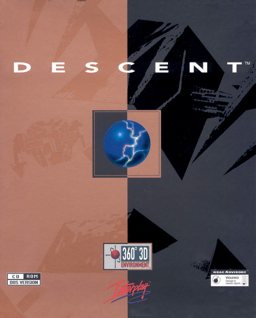
Descent is a first-person shooter (FPS) game developed by Parallax Software and released by Interplay Productions in 1995 for MS-DOS, and later for Macintosh, PlayStation, and RISC OS. It popularized a subgenre of FPS games employing six degrees of freedom and was the first FPS to feature entirely true-3D graphics. The player is cast as a mercenary hired to eliminate the threat of a mysterious extraterrestrial computer virus infecting off-world mining robots. In a series of mines throughout the Solar System, the protagonist pilots a spaceship and must locate and destroy the mine's power reactor and escape before being caught in the mine's self-destruction, defeating opposing robots along the way. Players can play online and compete in either deathmatches or cooperate to take on the robots.
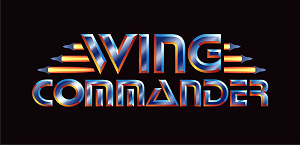
Wing Commander is a media franchise consisting of space combat simulation video games from Origin Systems, Inc., an animated television series, a feature film, a collectible card game, a series of novels, and action figures. The franchise originated in 1990 with the release of video game Wing Commander.

Freelancer is a space trading and combat simulation video game developed by Digital Anvil and published by Microsoft Game Studios. It is a chronological sequel to Digital Anvil's Starlancer, a combat flight simulator released in 2000. The game was initially announced by Chris Roberts in 1999, and following many production schedule mishaps and a buyout of Digital Anvil by Microsoft, it was eventually released in March 2003.
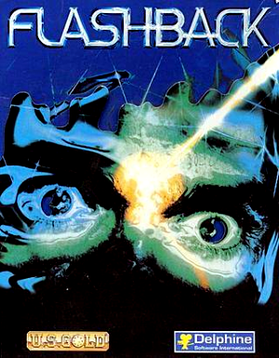
Flashback, released as Flashback: The Quest for Identity in the United States, is a 1992 science fiction cinematic platform game developed by Delphine Software of France and published by U.S. Gold in the United States and Europe, and Sunsoft in Japan.

Descent II is a 1996 first-person shooter game developed by Parallax Software and first published for DOS by Interplay Productions. For the PlayStation, it is known as Descent Maximum. It is the second installment in the Descent video game series and the sequel to Descent. The base of the gameplay remaining the same, the player controls a spaceship from the pilot's perspective and must navigate extrasolar underground mines to locate and destroy their reactors and escape being caught in their self-destructions, while engaging and surviving infected robots, which will attempt to destroy the ship. Unlike other first-person shooters, its six-degrees-of-freedom scheme allows the player to move and rotate in any three-dimensional space and direction.

Solar Winds: The Escape and its sequel Solar Winds: Galaxy are top-down, space-themed role-playing action games developed by James Schmalz and published by Epic MegaGames in 1993.

Terra Nova: Strike Force Centauri is a 1996 tactical first-person shooter video game developed and published by LookingGlass Technologies. Set in a science-fictional depiction of the 24th century, the game follows a faction of humans who colonize the Alpha Centauri star system to escape from the Hegemony, a totalitarian Earth government. The player assumes the role of Nikola ap Io, the leader of an Alpha Centauri military unit, and undertakes missions against pirates and the Hegemony.
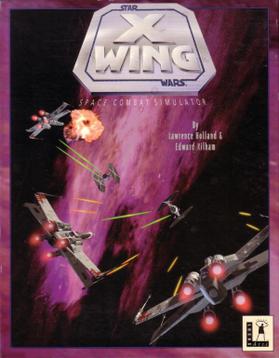
Star Wars: X-Wing is a space simulation video game, the first of the X-Wing combat flight simulation games series. The player's character flies starfighters, including the X-wing, for the Rebel Alliance. The narrative precedes and parallels the events of Star Wars Episode IV: A New Hope.

Epic is a space combat simulation game developed by Digital Image Design and published by Ocean Software for the Commdore Amiga and Atari ST in early 1992. A port to MS-DOS also appeared in the same year, followed by a version for the NEC PC-9801 in 1993. A sequel, titled Inferno, was released in 1994 for PCs only.

Epic Pinball is a 1993 pinball video game developed by James Schmalz and published by Epic MegaGames. The initial release pre-dated Schmalz' Digital Extremes name. The game is played seen from a 2D top-down view within a scrollable window with plain raster graphics in 320x240. It was noted for being programmed entirely in x86 assembly language for MS-DOS systems.
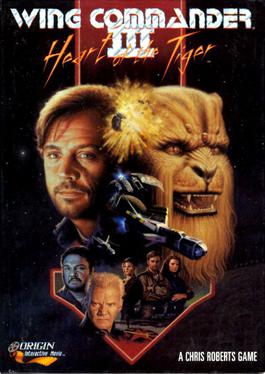
Wing Commander III: Heart of the Tiger is the third main game in Chris Roberts' Wing Commander science fiction space combat simulation video game series, developed and released by Origin Systems in December 1994. It was a departure from previous games in the series in that it uses extensive live action full-motion video to add an interactive movie-style presentation to the space combat gameplay, emphasized by its advertising slogan, "Don't watch the game, play the movie!". The game's more than two hours of video featured a number of prominent movie stars including Mark Hamill as Colonel Christopher "Maverick" Blair, Malcolm McDowell as Admiral Tolwyn, John Rhys-Davies as James "Paladin" Taggart and Thrakhath nar Kiranka, and Tom Wilson as Todd "Maniac" Marshall.

Zone 66 is a top down, multidirectional shooter released in 1993 for IBM PC compatibles as shareware. The game was created by a North American demoscene group called Renaissance, and was published by Epic MegaGames. The game shipped on a self-booting disk, so it could bypass MS-DOS and load into a custom protected mode environment.

Final Liberation is a turn-based tactics video game released for Microsoft Windows in 1997, and re-released on GOG.com in 2015. The game is best known as the first video game based on Epic, a table-top wargame set in the fictional Warhammer 40,000 universe, in an attempt to recreate the table-top experience on a computer as opposed to using it as a backdrop for games in other genres. As a result, the game borrows heavily in terms of rules and style from the table-top game, demanding a combination of luck and tactics necessary to succeed in game warfare.
BattleTech Centers are commercial virtual entertainment venues that feature multiplayer virtual combat in the fictional BattleTech universe. The games are played in fully enclosed cockpits with multiple screens, joysticks, and rudder pedals. Today, the gaming cockpits can now be found in only 2 sites listed in table below in the United States.

Creature Shock is a 1994 sci-fi game released for MS-DOS and 3DO. It was developed by Argonaut Software and published by Virgin Interactive Entertainment. The game was later ported to the CD-i, Sega Saturn and PlayStation video game systems.

Star Wars: TIE Fighter is a 1994 Star Wars space flight simulator and space combat video game, a sequel in the Star Wars: X-Wing series. It places the player in the role of an Imperial starfighter pilot during events that occur between The Empire Strikes Back and Return of the Jedi.
Star Wars: X-Wing is a series of space flight simulator video games based in the Star Wars media franchise that attempts to simulate the fictional experience of starfighter combat, while remaining faithful to the movies. The player took the role of a pilot of the Rebel Alliance, and, in later games, the Galactic Empire. To complete the games, players must complete missions such as simple dogfights with opposition starfighters, reconnaissance and inspection tasks, escort duty for freighters or capital ships, or attacks on larger opposition ships. In addition to dogfighting designed to resemble the free-wheeling duels of World War I, the games also offered the challenge of managing power resources and wingmen, and using weapons effectively.
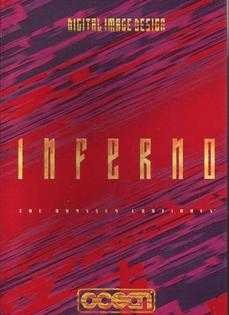
Inferno is a space combat simulator video game developed by Digital Image Design and published by Ocean Software in 1994 for the PC. It is a sequel to the 1992 game Epic.

Armored Core VI: Fires of Rubicon is a 2023 mecha-based vehicular combat game developed by FromSoftware and published by Bandai Namco Entertainment. The game is the first entry in the Armored Core series since Armored Core: Verdict Day (2013) and was released for PlayStation 4, PlayStation 5, Windows, Xbox One, and Xbox Series X/S on August 25th. It received generally positive reviews from critics and is the highest-selling entry in the series, selling over 2.8 million copies by October 2023.

















